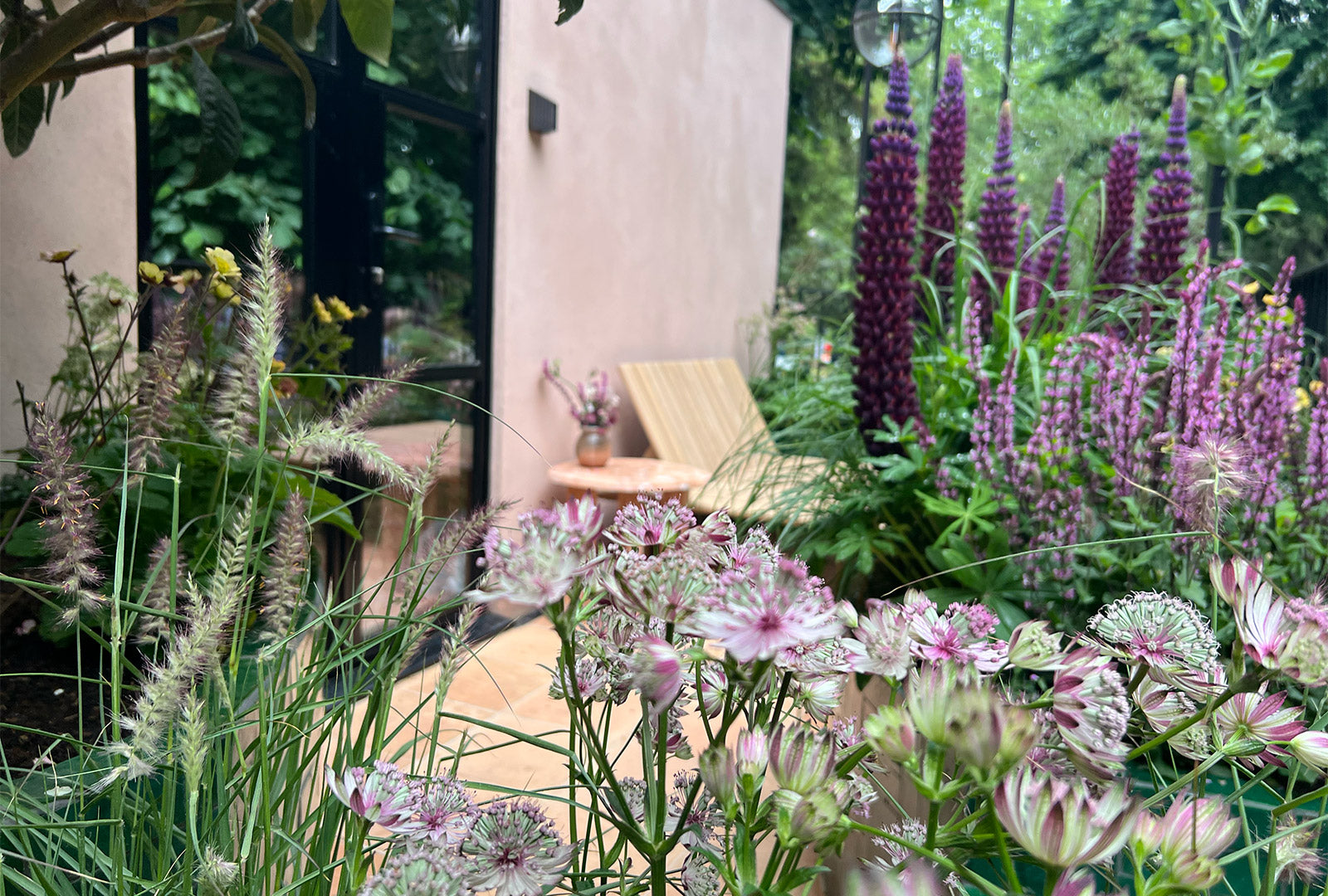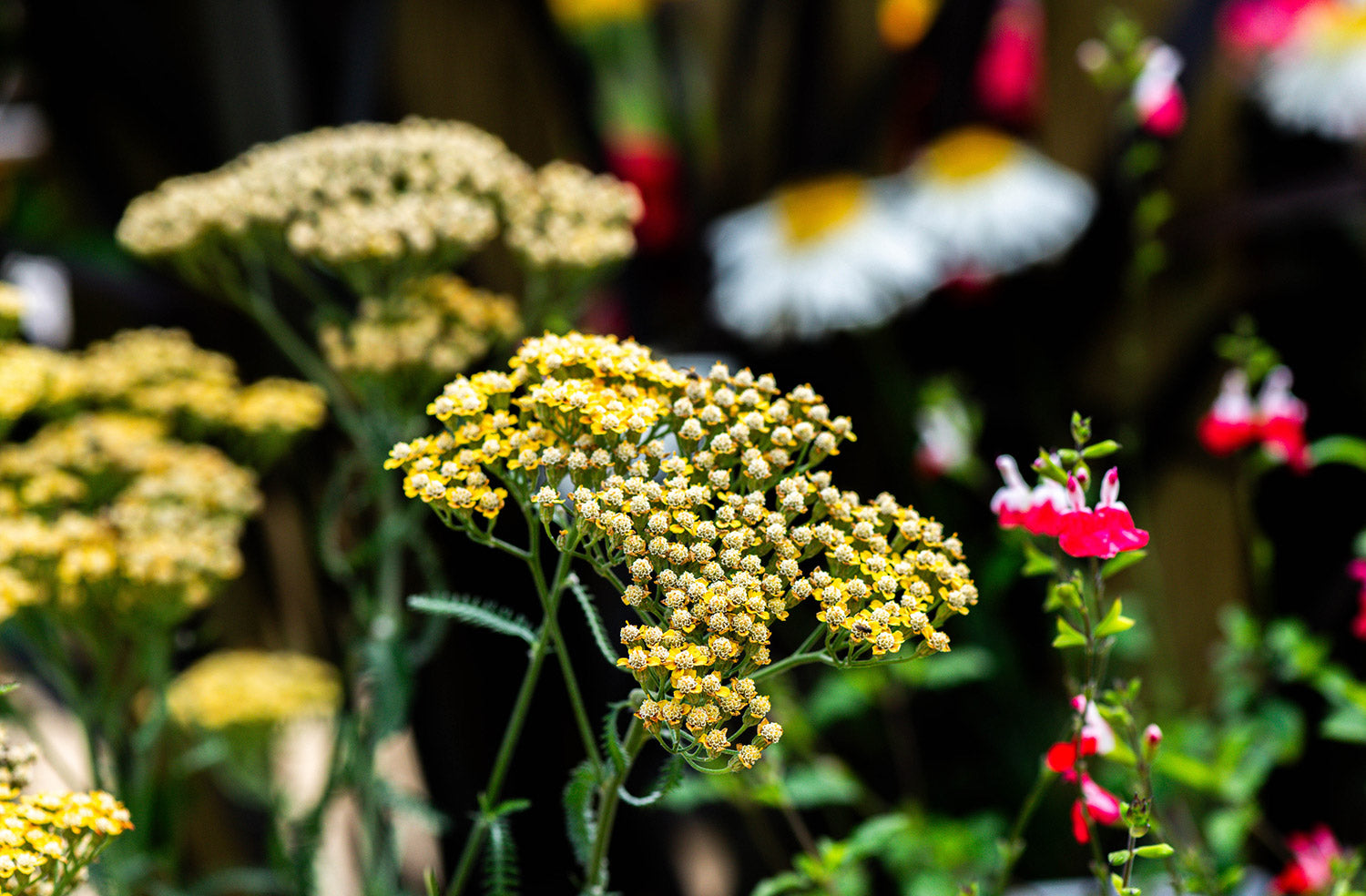The RHS Chelsea Flower Show 2025 confirmed once again that you don’t need acres of land to make a powerful horticultural statement. This year’s Balcony and Container Gardens celebrated small spaces with big personalities—balconies, rooftops, and patios transformed into sanctuaries, think tanks, spas, and even mood stabilisers. From carbon-smart planting to sensory design, here’s a deep dive into the standout gardens that proved size isn’t everything.
Carbon-Conscious and Chic The C6 Garden by Joshua Fenton
A masterclass in environmental innovation, Joshua Fenton’s C6 Garden pushed the boundaries of what a small urban garden can achieve. Its design aimed to sequester more than 1,200kg of carbon—equivalent to driving over 3,000 miles in an average petrol car. Central to its structure were charred oak panels, crafted through the traditional Japanese technique of shou sugi ban, which preserves wood without chemical treatment.
Planting focused on fast-growing, pollinator-friendly species that actively contribute to biodiversity. Varieties included Salvia nemorosa, Achillea millefolium, Nepeta racemosa, and tall Verbena bonariensis to draw in bees and butterflies. Recycled aggregates, crushed glass mulch, and reclaimed steel planters gave the space a rugged, contemporary aesthetic.
A copper water feature introduced movement and sound, while a bronze sculpture by a young UK artist added a striking focal point. The C6 wasn’t just a garden—it was a manifesto for low-impact, high-style living.
City Zen – Komorebi by Masa Taniguchi

Tranquility in 3 square metres. Masa Taniguchi’s Komorebi, named after the Japanese word for sunlight filtering through trees, offered an invitation to pause and breathe. Drawing from the practice of shinrin-yoku (forest bathing), the garden embraced verticality and layered textures to transform a compact balcony into a meditative retreat.
Slender Betula utilis (Himalayan birch) created a dappled canopy under which soft green ferns like Dryopteris wallichiana and Asplenium scolopendrium nestled in mossy underplanting. The use of natural materials—untreated cedar slats, stone gravel, and a ceramic basin filled with still water—encouraged mindfulness and reflection.
The design rejected ornamentation in favour of intention: every plant, surface, and curve served a sensory function. It was quiet, deliberate, and deeply refreshing.
Colour Therapy – MS Amlin Peace of Mind Garden by Hamzah-Adam Desai

If colour is medicine, then this was the prescription we all needed. Hamzah-Adam Desai’s Peace of Mind Garden, sponsored by MS Amlin, used colour psychology and spatial flow to create an environment that lifted spirits while grounding the senses.
Cool, therapeutic tones dominated the palette: soft lavender hues from Lavandula angustifolia, the sky-blue of Campanula poscharskyana, and the icy violet of Eryngium planum. These were layered with deep, mossy greens—Heuchera and Hosta among them—and offset by vibrant shocks of orange from Geum ‘Totally Tangerine’ and Eschscholzia californica.
The garden's layout directed the eye and eased the body, with curved seating zones and an open floorplan encouraging relaxed movement. A water bowl, placed asymmetrically, reflected the planting and added a gentle acoustic backdrop.
Designed as a mental health haven, it functioned as a tiny mood-balancing ecosystem.
Read, Relax, Repeat – A Space to Read by Freddie Strickland & Ben Gifford

This garden didn’t just suggest stillness—it demanded it. A Space to Read, co-designed by Freddie Strickland and Ben Gifford, was all about slow moments and sensory richness. Imagine a pocket-sized library nook infused with nature.
Textural planting included low-light lovers like Tiarella cordifolia, Brunnera macrophylla, and velvety Alchemilla mollis, chosen for their foliage and shade tolerance. Trailing vines such as Hedera helix softened the garden’s edges, while structural evergreens created a sense of enclosure and privacy.
At the centre was a timber reading bench built into the planters, with cushions and throws in weather-resistant linen. Book shelves were cleverly built into vertical structures, and a concealed speaker offered curated soundscapes—from birdsong to ambient jazz.

Whether curling up with a novel or sinking into a podcast, it was a garden made for literary escape.
Wilderness in the City – The Fettercairn Wilderness Retreat

This was the Highlands, distilled and delivered to a London balcony. The Fettercairn Wilderness Retreat took cues from Scotland’s ancient landscapes, with a focus on texture, elemental contrasts, and wild luxury.
Dominated by twisted Scots pines (Pinus sylvestris) and shaggy lichen-covered stones, the garden featured heathers, mosses, and hardy grasses like Deschampsia cespitosa and Molinia caerulea. Pockets of Anemone nemorosa and Digitalis purpurea added seasonal softness.
And yes, there was a plunge bath—crafted in copper and flanked by scented pines and weathered boulders. The experience was total immersion: woodland aromas, gurgling water, and the feel of rough bark under hand. It was escapism with an edge—and a whisky bar wouldn’t have gone amiss.
Room to Breathe Hospital Garden – Jen Donnelly & Catherine Gibbon for the TSA

Commissioned by the TSA (Telecare Services Association), this garden demonstrated how thoughtful planting and layout can enhance wellbeing in clinical settings. Jen Donnelly and Catherine Gibbon focused on multisensory design: from touchable textures to calming scents and views that soothe.
Planting was anchored around accessibility and therapeutic value—soft mounding Lavandula, textured Stachys byzantina, and brightly coloured Coreopsis verticillata were paired with ornamental grasses like Carex oshimensis for movement and structure.
Modular planters allowed for reconfiguration in tight hospital spaces. A sculptural seating area in pale timber invited connection or solitary rest. Clear sightlines and gentle curves ensured safe navigation for people with mobility issues.
A prime example of “healing through horticulture.”
The ME EM City Garden – Caroline & Peter Clayton, Viriditas Studio

A sleek, biophilic homage to modern metropolitan life, the ME EM City Garden balanced calm and cosmopolitan flair. Designers Caroline and Peter Clayton of Viriditas Studio focused on simplicity, with mirrored planters, elegant hardscaping, and a layered green palette.
Evergreen structure came from Buxus sempervirens and clipped Ilex crenata, underplanted with Euphorbia myrsinites, Sedum spathulifolium, and Festuca glauca. Architectural perennials like Allium ‘Purple Sensation’ and Agapanthus africanus punctuated the design, offering height and rhythm.
LED strip lighting added mood after dusk, while integrated seating and foldaway tables made it a multifunctional retreat. This was a garden that dressed up or down—ready for morning mindfulness or an evening cocktail.
Navium Marine: Blue Mind Garden – Ashleigh Aylett

Inspired by the concept of “blue mind”—the meditative state triggered by proximity to water—Ashleigh Aylett’s Blue Mind Garden was all cool tones, flowing forms, and ripple motifs.
Planting followed a blue-green-white scheme: Amsonia tabernaemontana, Hydrangea arborescens ‘Annabelle’, Hosta ‘Halcyon’, and silvery Stachys officinalis echoed aquatic calm. A narrow rill trickled through the space, its soundscape amplified by the hard surfaces and curved metalwork that mimicked wave crests.
Materials included glazed ceramic, brushed steel, and recycled glass mulch. It was a space that felt both immersive and ethereal, encouraging visitors to slow their breathing, rest their eyes, and feel a little more at peace.
Steal These Trends
Drought-Smart Planting – With climate change in mind, designers leaned into hardy, water-wise species that still bring the drama.
Vertical Vibes – From trellises to tiered planters, going upwards is still the smartest way to green your grid.
Water Elements – Even the tiniest spaces can benefit from the soothing trickle of a mini fountain or reflective pool.
Fill–Thrill–Spill – The classic planting combo still reigns: a bold centrepiece, surrounding support acts, and trailing drama to finish it off.
The Balcony & Container Gardens of Chelsea 2025 may have had small footprints, but their ideas were expansive. Sustainability, accessibility, mental wellness, and micro-escapism all had a seat at the table. Whether you're working with a windowsill or a roof terrace, these designs prove there’s always room to grow.






